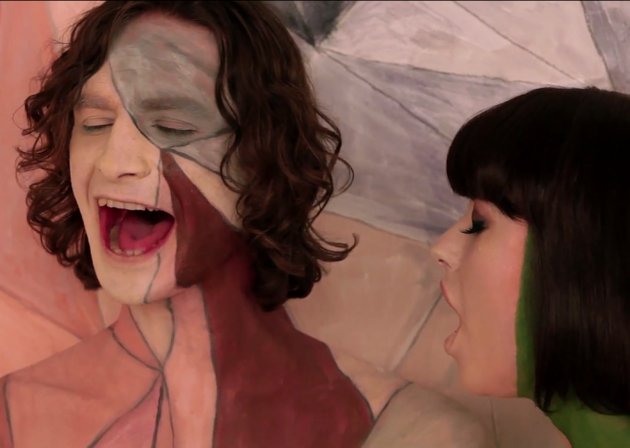
Has Pop Become Slower and Sadder?
Gotye and Kimbra in a still from the ‘Somebody That I Used to Know’ video.
Priya Elan in The Guardian discusses a recent study published in Psychology of Aesthetics, Creativity, and the Arts, which claims to demonstrate that American popular music now utilises more complex emotional cues, with an increase in length and a pervasiveness of slower tempi, as compared to earlier decades:
Think that the Top 40 is full of zingy, identikit and insincere LOLZpop (feat Pitbull)? Not according to scientists. New findings published in Psychology of Aesthetics, Creativity and the Arts suggest that since 1965, chart hits have become longer, beats per minute have reduced and the lyrics of songs have displayed “mixed emotional cues”.
Whilst the study itself supports its initial hypotheses with rigourous enough quantitative evidence, it ignores to its detriment some more fundamentaal theoretical debates that might have given more texture to the paper, notably regarding the theoretical assumption that aspects of music such as minor keys and slower tempi can signify anything, let alone anything uniform, outside a musical and cultural context.
Published on 5 June 2012









